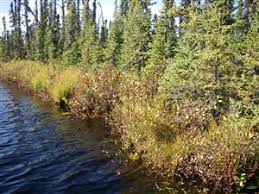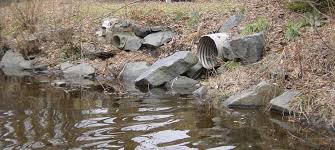The factors that affect the development and operations of fresh water ecosystems are mainly biotic and abiotic factors. Abiotic factors are essentially non-living components that affect the living organisms of the freshwater community.
The abiotic factors can be further divided into two; those which relate to temperature and those which relate to water conditions. The biotic factors on the other hand are those factors that relate to living organisms within the ecosystem.
When a variety of species are present in such an ecosystem, the consequent actions of these species can affect the lives of other species in the area.
These factors, which determine the sort of life that will suit adaptation to the conditions of the ecosystem, are referred to as biotic factors.
1. Abiotic Factors: Temperature
As described in above, the light from the sun is a major constituent of a fresh water ecosystem, providing light for the primary producers, plants.
There are many factors which can affect the intensity and length of time that the ecosystem is exposed to sunlight. Some of these factors are as follows;
Aspect – The angle of incidence at which light strikes the surface of the water. During the day when the sun is high in the sky, more light can be absorbed into the water due to the directness of the light.
At sunset, light strikes the water surface more acutely, and less water is absorbed. The aspect of the sun during times of the day will vary depending on the time of the year.
Cloud Cover – The cloud cover of an area will inevitably affect intensity and length of time that light strikes the water of a freshwater ecosystem. Species of plants rely on a critical period of time where they receive light for photosynthesis.
Season – The seasons in an ecosystem are very different, and this is because less light and heat is available from the sun in winter and vice versa for summer, therefore these varying conditions will affect which organisms are suited to them.
This factor applies more in temperate environments than the tropics, where little differences may be experienced at different seasons.
Location – The extreme latitudes receive six months of sunlight and six months of darkness, while the equator receives roughly 12 hours of sunlight and darkness each day. This sort of variance greatly affects what type of organisms would occupy freshwater ecosystems due to these differences.
Altitude – For every one thousand metres above sea level, average temperature drops by one degree Celsius. Altitude will also affect the aspect of which sunlight hits the freshwater ecosystem, therefore playing a part on which organisms will occupy it.
Temperature – As you can see, many abiotic factors can play a part in determining the end product, which organisms live and succeed in the freshwater ecosystem. The sun provides light for photosynthesis, but also provides heat giving a suitable temperature for organisms to thrive in.
The temperature of a freshwater environment can directly affect the environment as a whole and the organisms that occupy it.
Furthermore, enzymes operate best at an optimum temperature, and any deviation from this temperature ‘norm’ will result in below optimum respiration in the organism.
All aquatic organisms are ectotherms, meaning their body temperature varies directly with its environment.
Temperature also affects the density of substances, and changes in the density of water means more or less resistance for animals who are travelling in the freshwater environment.
ReadAlso : Aquatic Organisms: Invertebrates
The above examples of abiotic factors involve physical characteristics of the freshwater environment, which are continued, with subsequent information studying how the chemical composition of the freshwater ecosystem also affects which organisms survive in the environment and how they cope in these conditions.
2. Abiotic Factors: Water Conditions
Evidently, the light and heat from the sun play an important role in providing suitable conditions. However, the water conditions also inevitably have an effect on life in the ecosystem.
A still body of water will inevitably be disturbed by various factors, which will affect the distribution of organisms in the water.
Wind is considered to be the prime factor responsible for disturbing water, though changes in temperature can create convection currents where temperature is evened out across the body of water via this movement.

Naturally, a river will have water movement as water succumbs to gravity and moves downstream. These are relatively constant factors that affect water movement though, for example, human intervention can also cause water movement.
The surface tension of the water will also affect the organisms that occupy the area, depending on the cohesion of water at the surface; it can affect the amount of oxygen that reaches organisms living below the water surface.
These factors all affect the way of life for organisms occupying such a freshwater ecosystem. On a more molecular level, the chemical compositions of the water, soil and surrounding air also play a part in determining the face of the ecosystem.
The oxygen concentration of the water and the surrounding air will have great bearing on which organisms can survive in a particular environment.
Oxygen is required for aerobic respiration in animals, and the concentration of oxygen in an area is determined by many factors, including temperature and abundance of organisms for example.
Many chemical reactions and cellular processes rely on the availability of oxygen; therefore the concentration of oxygen in the ecosystem will inevitably alter the ecosystem itself.
The same applies to carbon dioxide concentration, which is required for photosynthesis, and can also affect the pH of the water for example.
It is thus evident that many factors will affect the overall existence of organisms in an ecosystem. The chemical and physical characteristics to begin with will determine which organisms are most likely to survive in the freshwater ecosystem.
In turn, these pioneers entering the environment will actively manipulate these factors and change the schematics of the ecosystem as a whole, meaning that they also play a part in determining which organisms will succeed in a particular environment.
Read Also : Why John Deere Tractors Are Best For Driving Agricultural Productivity

